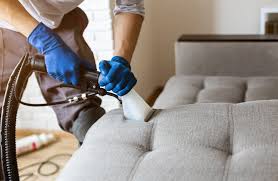Brooklyn’s climate, especially during humid seasons, can have a significant impact on upholstery drying time. After cleaning, upholstery retains moisture that needs to evaporate for the furniture to fully dry. However, high humidity levels slow down the evaporation process, which can lead to longer drying times and even issues like mildew or musty odors if not managed properly. This article explores how humidity affects upholstery drying, tips for faster drying, and best practices for maintaining your upholstery in Brooklyn’s variable climate.
Understanding the Relationship Between Humidity and Drying Time
Humidity measures the amount of moisture in the air. When the humidity level is high, the air is already saturated with moisture, so it becomes harder for water to evaporate from surfaces, including upholstery. In Brooklyn, especially during the summer months, humidity can range from moderate to very high, which significantly impacts how quickly cleaned upholstery dries.
During periods of high humidity:
- Slower Evaporation: The moist air slows down the rate at which water leaves the upholstery fibers, extending drying time.
- Potential for Mold and Mildew: Prolonged drying creates an environment where mold and mildew can develop, especially in deep upholstery layers.
- Risk of Unpleasant Odors: Extended drying may lead to musty or stale odors if upholstery is not allowed to dry completely.
Tips for Faster Upholstery Drying in High Humidity
To help reduce drying time, you can implement several techniques that encourage faster moisture evaporation, even during humid days:
- Maximize Air Circulation Airflow plays a critical role in evaporating moisture from upholstery. Opening windows, using ceiling fans, or placing portable fans near furniture can increase air movement, helping the moisture escape from the upholstery faster. Cross-ventilation (opening multiple windows) allows for a natural airflow that promotes faster drying. If the outside air is very humid, close windows and focus on indoor air circulation.
- Use a Dehumidifier A dehumidifier pulls moisture from the air, creating a drier environment indoors. Running a dehumidifier in the same room as your freshly cleaned upholstery will help reduce the humidity level, making it easier for the moisture in your upholstery to evaporate. For larger furniture pieces or rooms, a larger-capacity dehumidifier may be needed to handle the increased moisture load effectively.
- Consider a Hairdryer or Heat Gun (on Low Setting) for Spot Drying For smaller upholstery items or stubbornly wet spots, using a hairdryer on a low heat setting can provide targeted drying. Be cautious to keep the dryer moving and avoid high heat, as excessive heat may damage delicate upholstery fabrics. For thick, absorbent materials, a heat gun or hairdryer may help release trapped moisture.
- Control Indoor Temperature Warmer temperatures encourage faster evaporation. Using a heater or adjusting the thermostat to a slightly warmer setting can aid in the drying process, especially if it’s too humid to open windows. Just remember to balance this with air circulation and monitor the upholstery closely to prevent overheating or fabric damage.
- Schedule Cleaning During Lower Humidity Times Brooklyn’s humidity levels tend to be lower during spring and fall, so if possible, try to clean upholstery during these seasons. Checking the weather forecast and planning your cleaning on days when humidity levels are lower can significantly reduce drying time. Late mornings and afternoons, when temperatures rise slightly, may also have lower humidity than early morning or evening hours.
Common Mistakes to Avoid During Upholstery Drying in Humid Conditions
Several pitfalls can lengthen drying time or damage your upholstery during high humidity, so it’s essential to be mindful of these:
- Avoid Over-Saturating Upholstery: Only use as much cleaning solution as necessary, and avoid soaking the fabric. Excess water will extend drying time and increase the risk of mold growth.
- Don’t Skip the Pre-Treatment Vacuuming: Dirt and dust can hold moisture, making it harder for upholstery to dry. Vacuuming before cleaning removes this debris, helping the fabric dry more efficiently.
- Don’t Cover or Use Upholstery Until Completely Dry: Placing cushions back on a couch or using upholstery before it’s fully dry can trap moisture and lead to mold. Wait until the fabric feels completely dry to the touch, especially in humid environments.
Preventing Mold and Mildew in Upholstery
High humidity can encourage mold and mildew growth, particularly if upholstery is left damp for too long. Here are a few ways to avoid these issues:
- Use an Anti-Microbial Spray: After cleaning, lightly spray your upholstery with an anti-microbial solution to prevent mildew and mold from developing during the drying period. These sprays are often safe for upholstery fabrics but always perform a patch test first.
- Inspect Upholstery Regularly: Keep an eye on areas prone to moisture retention, such as seat cushions and lower sections, especially during humid months. Early detection of damp spots or musty odors allows you to dry these areas quickly and prevent mold buildup.
- Invest in Professional Cleaning: Professional upholstery cleaners in Brooklyn have specialized equipment designed to extract moisture more efficiently, which can be especially useful in humid areas like Brooklyn. Many services also offer quick-drying treatments to minimize drying time and mold risk.
Conclusion
Humidity in Brooklyn can undoubtedly impact upholstery drying time, but with the right strategies, you can ensure your furniture dries effectively. By controlling indoor air circulation, using dehumidifiers, managing indoor temperature, and scheduling cleanings during drier periods, you can help reduce the challenges that humidity poses. Regular maintenance and proper drying methods will keep your upholstery in excellent condition, creating a cleaner and healthier home environment.

Leave a Reply
You must be logged in to post a comment.